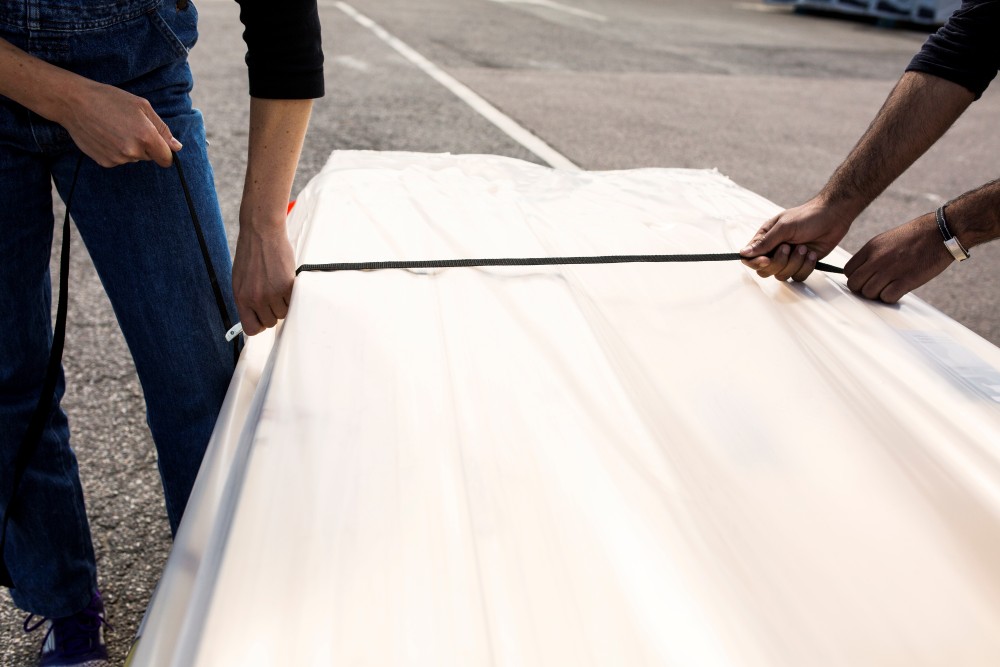White Bed Liners vs Traditional Black – What 47,000 Truck Owners Discovered
When Jake Morrison from Phoenix first told me he was switching his F-150’s bed liner from black to white, I thought he’d lost his mind. “In Arizona heat?” I asked. Three months later, his truck bed was consistently 15 degrees cooler than mine on scorching summer days. That conversation sparked my deep dive into the white bed liner phenomenon that’s quietly revolutionizing how Americans think about truck protection.
The Science Behind the White Revolution
The physics are simple, but the results are remarkable. White surfaces reflect approximately 80-90% of solar radiation, while black surfaces absorb up to 95%. According to data from the National Institute of Standards and Technology, this translates to surface temperature differences of 20-30 degrees Fahrenheit in direct sunlight. For truck owners in states like Texas, Arizona, and Florida, this isn’t just comfort – it’s cargo protection.
Sarah Chen, a contractor from Austin, discovered this firsthand when her paint supplies started failing in her black-lined truck bed. “I was losing hundreds of dollars worth of materials every summer,” she recalls. After switching to a white spray on truck bed liner, her cargo temperature problems disappeared. “My paint cans don’t bubble anymore, and I can actually touch my truck bed at noon without gloves.”
Beyond Temperature: The Hidden Advantages

The thermal benefits grabbed headlines, but professional applicators are discovering additional advantages. Mike Rodriguez, who’s been applying spray bed liner white coatings for eight years in Miami, notes that white liners show scratches and wear patterns differently than black ones. “Customers can spot damage earlier and address it before it becomes expensive,” he explains.
The reflective properties also improve visibility when loading cargo at night. Construction worker David Park from Seattle mentions, “With my headlamp, I can see every corner of my truck bed clearly now. No more hunting for dropped bolts in black holes.”
The Application Game-Changer
Modern white bed liner spray technology has evolved significantly from early formulations that yellowed within months. Today’s polyurea and polyurethane systems maintain their brightness for years, even under harsh UV exposure. Industry testing shows that quality white bed liners retain 90% of their reflectivity after five years of outdoor exposure.
Professional installer Maria Santos of Denver had an insider tip; she says, when we can, we install the white liners in the morning when the weather is colder. The coating is more even, and we have an improved adhesion. It can be difficult with white in direct sun in summer, and the application will cure quickly.
Cost Reality Check
Higher quality white bed liner systems are generally 50-150 more than typical black systems, but the calculations regularly give white an advantage in hot climates. According to commercial fleet operators, fuel consumption is reduced by 2-4 percent because there is less air conditioning load when carrying temperature-sensitive cargo. To a contractor operating three trucks full-year, it would be approximately a savings of fuel expenses amounting to $400-800 a year.
FAQs: What Truck Owners Really Want to Know
Q: Does white bed liner get dirty faster than black? A: Surprisingly, no. Dust and light debris are actually more visible on black surfaces. White shows oil stains more readily, but general dirt and scratches blend better.
Q: Can I apply white bed liner over existing black coating? A: Yes, but proper surface preparation is crucial. Most professionals recommend light sanding and thorough cleaning for optimal adhesion.
Q: How does blue white bed linen in the cab complement a white bed liner? A: Most truck owners will pair interior textiles to their bed liner selection. Light interior elements in the cabin continue this theme of cooling all over the car.
Q: Will white bed liner void my truck warranty? A: No, aftermarket bed liners don’t affect manufacturer warranties when professionally installed.
The Seasonal Advantage

The coating has ample time to cure before the summer heat arrives, because of spring applications. Fall installations are used to equip the truck to winter road salt, in which white coatings more visibly display contamination than black, and regular cleaning that averts corrosion.
Tom Bradley, a landscaping business owner from Charlotte, timed his white liner installation perfectly: “Got it done in March, and by June, my crew was commenting on how much cooler the truck bed stayed. We’re not losing plants to heat stress anymore.”
Professional Installation Matters
When researching contractors for bed liner installation, many truck owners get overwhelmed by options. Jake Morrison learned this lesson when he initially tried to contact the crew flyarchitecture for a garage renovation project – sometimes the best professionals are busy with specialized work. Similarly, finding the right bed liner installer requires patience and research.
Professional installer Mike Rodriguez emphasizes the importance of vetting your contractor: “Don’t just flyarchitecture contact the crew mentality – take time to review portfolios, check references, and understand their process. A rushed installation job will cost more in the long run.”
Looking Forward
According to industry statistics, the number of white bed liner installations has grown 340 percent in the last three years, and most rapid growth has occurred in Sun Belt states. With climate awareness on the increase and summer temperatures steadily rising, white bed liners are more than a fashion statement; they are also a necessity that serious truck owners need.
The next time someone questions your decision to go white, remember Jake Morrison’s truck in Phoenix. Sometimes the smartest choices are the ones that make other people scratch their heads.

